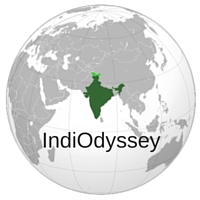Mitragyna parvifolia = Krishna’s Kadam Tree
(Kaim, Kadam, Kadamba)
What it is, what it isn’t
These hardy deciduous trees are still everywhere in Vrindavan, especially along the Parikrama Marg on the Northeast end of the path. Following the ancient riverbed of the sacred Yamuna in Vrindavan is where our kadam beads and oil are born. Some books will still tell you that the kadam associated with Lord Krishna in Vrindavan is the Neolamarckia cadamba tree but this is most definitely a case of mistake identity. Neolamarckia cadamba is native to moist forest in Northeast India and would not survive naturally in the hot, dry Vrindavan area. Mitragyna parvifolia is not only native to the Vrindavan forests but is their dominant tree. Oh, and everyone in Vrindavan calls kaim “kadam”!
In Myth and Medicine
Besides having a long history of medicinal value, the kadam (kaim) tree is associated with several Hindu gods and goddesses. Of particular interest to us, are the tales of Krishna and Radha, his loving consort and the gopis (milk maidens) spending idyllic pastimes under the fragrant kadam trees in the Vrindavan forests.
One story goes, the gopis all go down to the Yamuna river for a swim. While they are in the river, splashing around, the mischievous Krishna steals their cloths, hangs the garments in a kadam tree, and waits in the tree for the naked gopis to come out of the river to retrieve their clothing. This kadam tree is still here, with gopi garments scattered all over the branches! The tree is held sacred by the followers of Krishna and its flowers are offered in the temples of Vrindavan.
“In the warm dark night, astride her regal lion,
Durga emerges from the kadam forest, her black hair flowing,
perfumed with the intoxicating scent of the sacred kadam…
Hail the mighty Goddess”
Sen Gupta (12th century A.D.)
Various other religious groups in India believe that God lives inside a kadam tree, so enormous is its significance to humankind. Goddess Durga likes to live in the forest of kadam trees, and her long luxurious black hair is fragrant with the rich essence of kadam.
On the front page of our IndiOdysseyShop, you’ll see a Vrindavan artisan hand carving Tulsi beads. This is the guy who also carves our kadam beads from the Mitragyna parvifolia trees in the ancient forests of Vrindavan.
Here’s some of our items hand made from Vrindavan kadam wood (as we add more to the shop, we’ll add them to the list):

